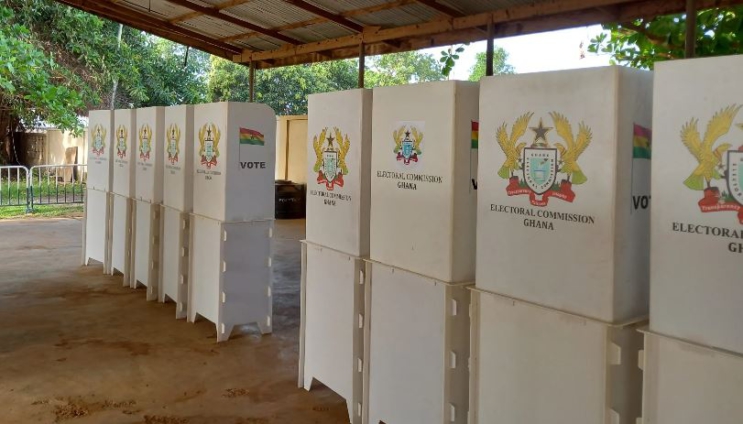The Electoral Commission (EC) has rescheduled the district-level elections in some electoral areas in the Ashanti and Eastern Regions.
According to available information, the development is due to technical challenges involving the printing of ballots by the EC's contractors.
JoyNews' correspondent in the Ashanti region reports that some districts including Bantama, South Sontreso, Atwima Nwabiagya, Atwima Mponua, Dadeso and Santasi, will not be participating in the exercise today.
These areas have been exempted from the exercise due to the Electoral Commission's delay in delivering their voting materials.
In a statement signed by the Acting Head of Public Relations for the EC, Michael Boadu, the Commission said the affected areas are scheduled to participate in the exercise on Thursday, December 21, 2023.
Meanwhile, the exercise was expected to cover 6,215 electoral areas across 216 metropolitan, municipal, and district assemblies except the Nkoranza North and South in the Bono East Region.
Over 66,000 people are competing for the District Assembly and Unit Committee positions in the District Level Elections.
The EC’s data indicates that there are 18,755 assembly member candidates and 47,502-unit committee member candidates, totaling 66,257 candidates.
Out of the 18,755 assembly candidates, 17, 474 are males representing 94 percent, whilst the females are 1,106 representing six per cent.
Also, out of the 47,502-unit committee candidates, 40,923 are males representing 88 per cent and the females are 5,413 representing 11.6 per cent. This will be an appreciable increase in the number of candidates who contested the elections four years ago.
However, this enthusiasm from the candidates has not trickled down to the voters yet.
The exercise, since its inception in 1988, has always been met with voter apathy and lack of enthusiasm though it has been touted as one of the best platforms for citizens to participate actively in selecting their local representatives.
Data shows that in 1998/89 when the DLE commenced, voter turnout was 59.3 per cent. However, in 1994, the figure reduced drastically to 29.3 per cent.
It jumped up again from 29.3 to 41.6 per cent in 2002.
Unfortunately, whatever measures that were put in place in 2002 could not be sustained and this led to a decline in the numbers in 2006. The voter turnout for that year was 33.1 per cent. In 2010, the turnout increased slightly to 35.5 per cent and decreased again to 30.6 per cent in 2015.
The low participation of women has also been one of the woes associated with this election.
Latest Stories
-
DAMC, Free Food Company, to distribute 10,000 packs of food to street kids
1 hour -
Kwame Boafo Akuffo: Court ruling on re-collation flawed
1 hour -
Samuel Yaw Adusei: The strategist behind NDC’s electoral security in Ashanti region
2 hours -
I’m confident posterity will judge my performance well – Akufo-Addo
2 hours -
Syria’s minorities seek security as country charts new future
2 hours -
Prof. Nana Aba Appiah Amfo re-appointed as Vice-Chancellor of the University of Ghana
3 hours -
German police probe market attack security and warnings
3 hours -
Grief and anger in Magdeburg after Christmas market attack
3 hours -
Baltasar Coin becomes first Ghanaian meme coin to hit DEX Screener at $100K market cap
3 hours -
EC blames re-collation of disputed results on widespread lawlessness by party supporters
4 hours -
Top 20 Ghanaian songs released in 2024
4 hours -
Beating Messi’s Inter Miami to MLS Cup feels amazing – Joseph Paintsil
4 hours -
NDC administration will reverse all ‘last-minute’ gov’t employee promotions – Asiedu Nketiah
4 hours -
Kudus sights ‘authority and kingship’ for elephant stool celebration
4 hours -
We’ll embrace cutting-edge technologies to address emerging healthcare needs – Prof. Antwi-Kusi
5 hours

